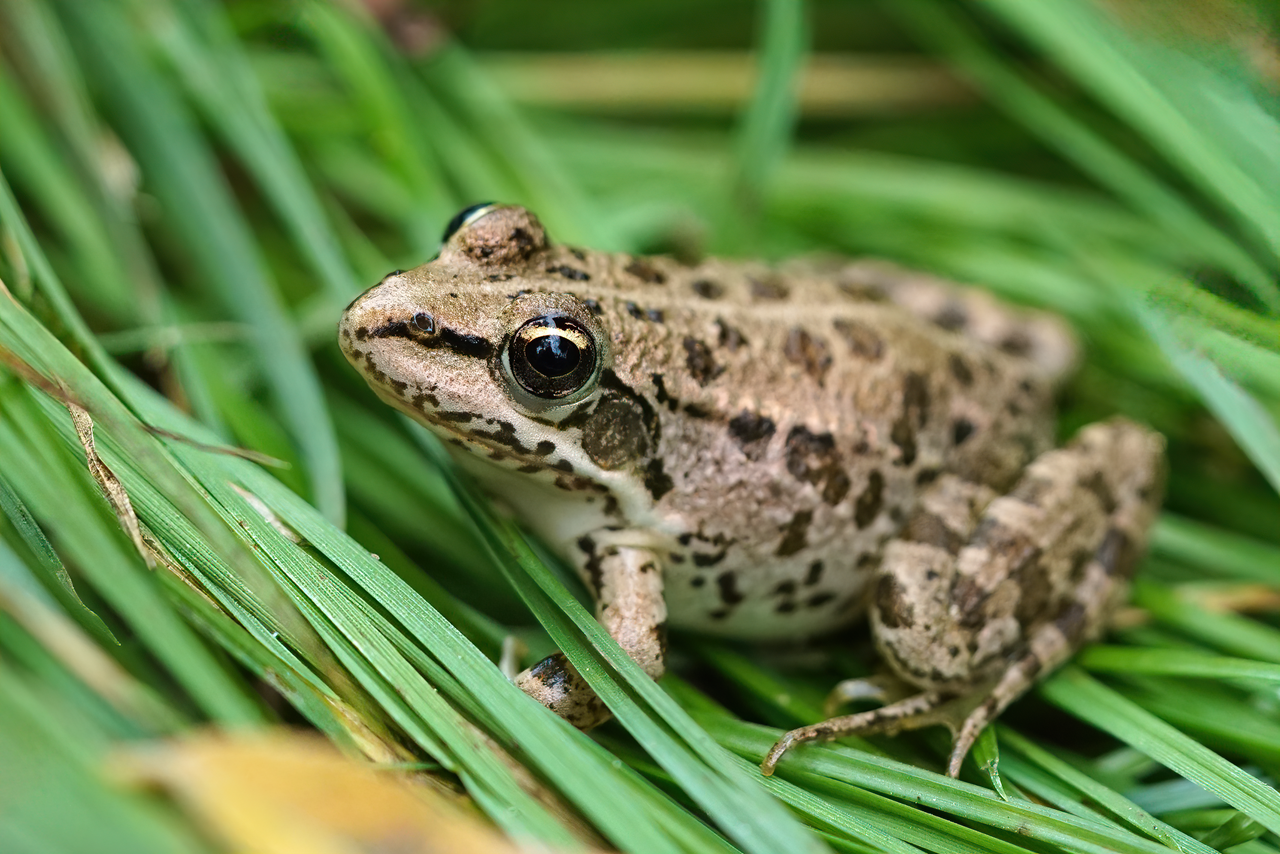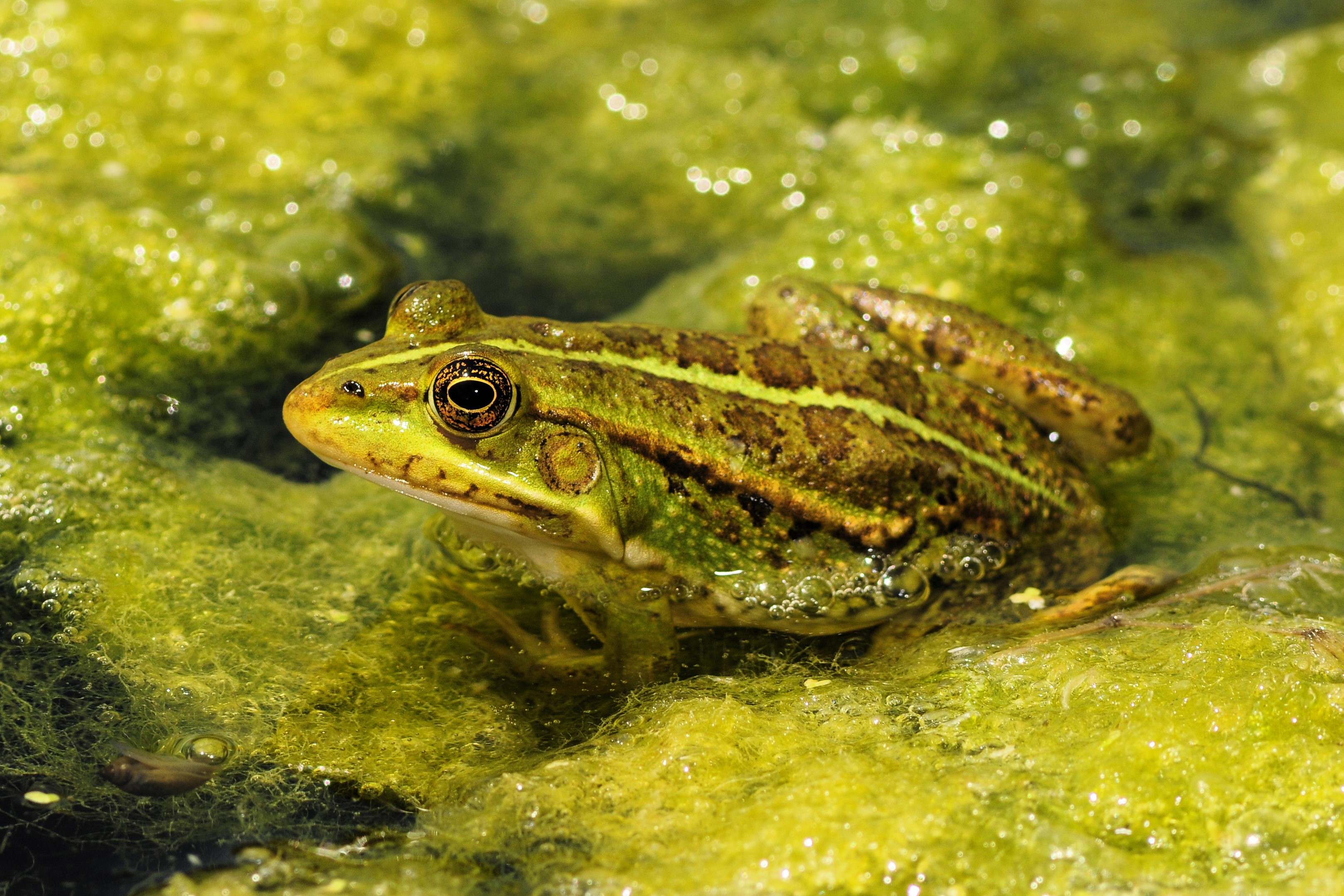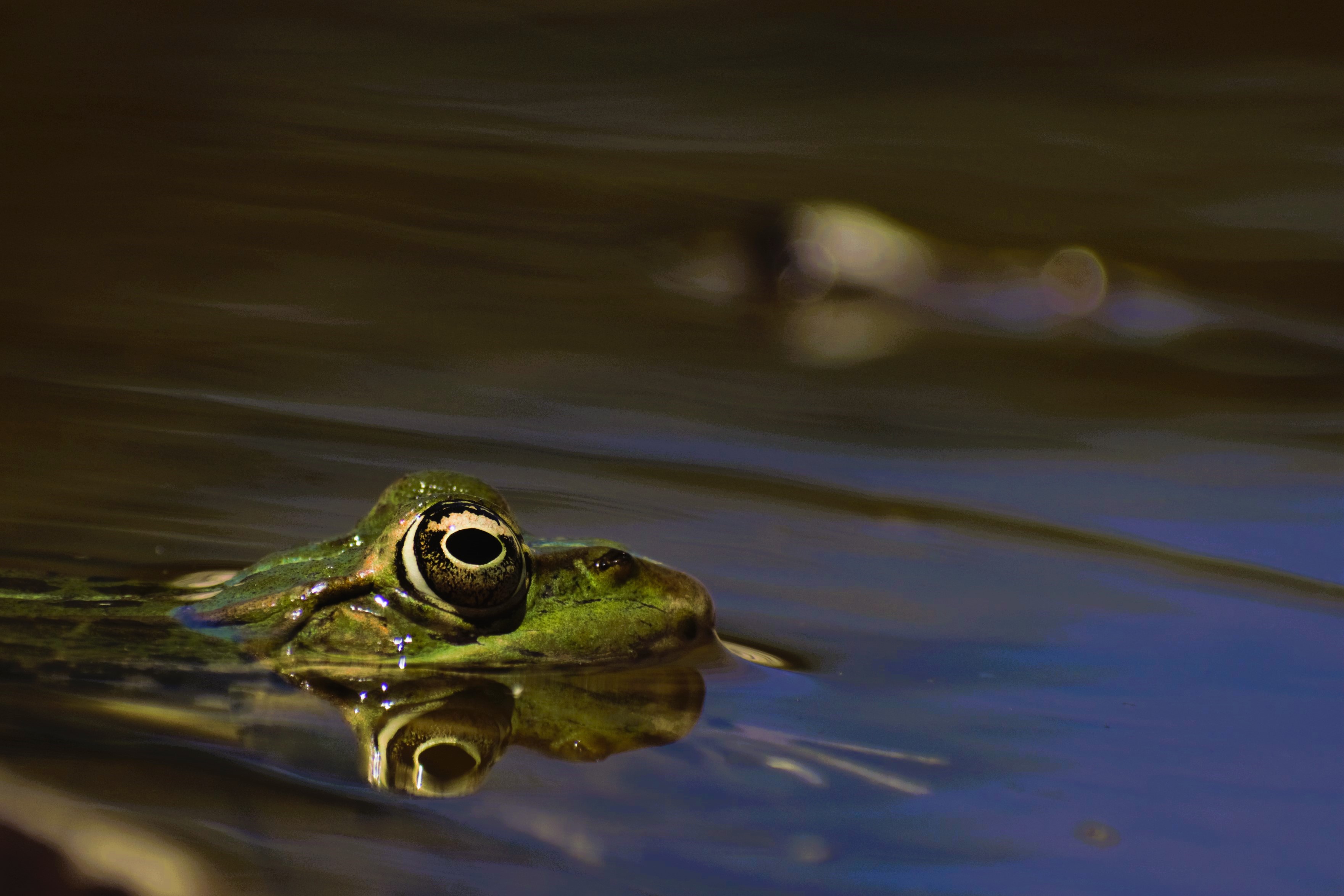Pelophylax kurtmuelleri





Amphibia → Anura → Ranidae → Pelophylax → Pelophylax kurtmuelleri
Rana fuèsta
The Balkan Green Frog ( Pelophylax kurtmuelleri ) is notable for its large size, ranking among the biggest green frogs in Europe, and for its vivid coloration that ranges from bright green to olive-brown, always with irregular dark dorsal spots.
Sexual dimorphism is quite evident: males can reach 3.1–3.9 in (8–10 cm), while females are slightly larger, up to 4.7 in (12 cm).
During breeding periods, males show dark nuptial pads on their thumbs and conspicuous gray-blackish vocal sacs; females, on the other hand, are distinguished by their larger size and paler coloration of soft parts.
Robust forelimbs in males facilitate mating during the reproductive season.
Newly hatched tadpoles measure about 0.31–0.35 in (8–9 mm), with brownish-green colors and golden highlights, and complete metamorphosis after about 3 months.
Pelophylax kurtmuelleri , native to the Balkans, was accidentally introduced to coastal and lowland areas of western Liguria, where it is now found in localized populations, generally below 980 ft (300 m).
Its distribution in these regions appears closely related to environments modified by humans, such as irrigation channels and urbanized areas, where it has found suitable conditions for colonization.
In western Liguria, its presence is being monitored due to the invasive potential of the species and the risk to native fauna.
It prefers aquatic environments rich in vegetation, both natural and artificial: irrigation channels, temporary or permanent ponds, reservoirs, and coastal wetlands are its favored sites.
The most robust populations are reported from areas where submerged and riparian vegetation offers shelter, food, and suitable breeding sites.
The species shows great adaptability, even colonizing ephemeral water bodies provided there is enough plant cover.
The Balkan Green Frog displays mainly diurnal and crepuscular habits; its activity period begins in spring, while the winter dormancy—rather short in coastal areas (December–February)—is spent in muddy bottoms or hidden among aquatic vegetation.
Reproduction takes place from April to July: males are easily located thanks to their powerful vocalizations, much stronger than those of other native green frogs.
Females lay between 2,000 and 6,000 eggs in large gelatinous masses attached to aquatic plants; larval development takes about three months to complete metamorphosis.
An opportunistic species, adult diet consists of large insects, small vertebrates, other amphibians, small fish, and crustaceans.
Tadpoles, on the other hand, feed mainly on algae, plant detritus, and small aquatic invertebrates.
The high variability in diet reflects the great adaptability of the species to colonized environments.
In Liguria, Pelophylax kurtmuelleri is considered a potential threat to the ecological balance of water bodies, mainly due to competition and/or possible hybridization with native green frog species ( Pelophylax kl. esculentus and Pelophylax lessonae ).
Habitat alteration, water pollution, pesticide use, and predation by non-native species are further risk factors, not only for the introduced species but also for indigenous populations.
This frog stands out not only for its size but also for generally more competitive and aggressive behavior compared to native species of the same genus.
Its presence in Liguria is under constant observation to evaluate impacts on local amphibian populations and prevent further expansion.
Management strategies aim to limit the spread of this species and raise awareness of the importance of conserving native species and aquatic ecosystems.